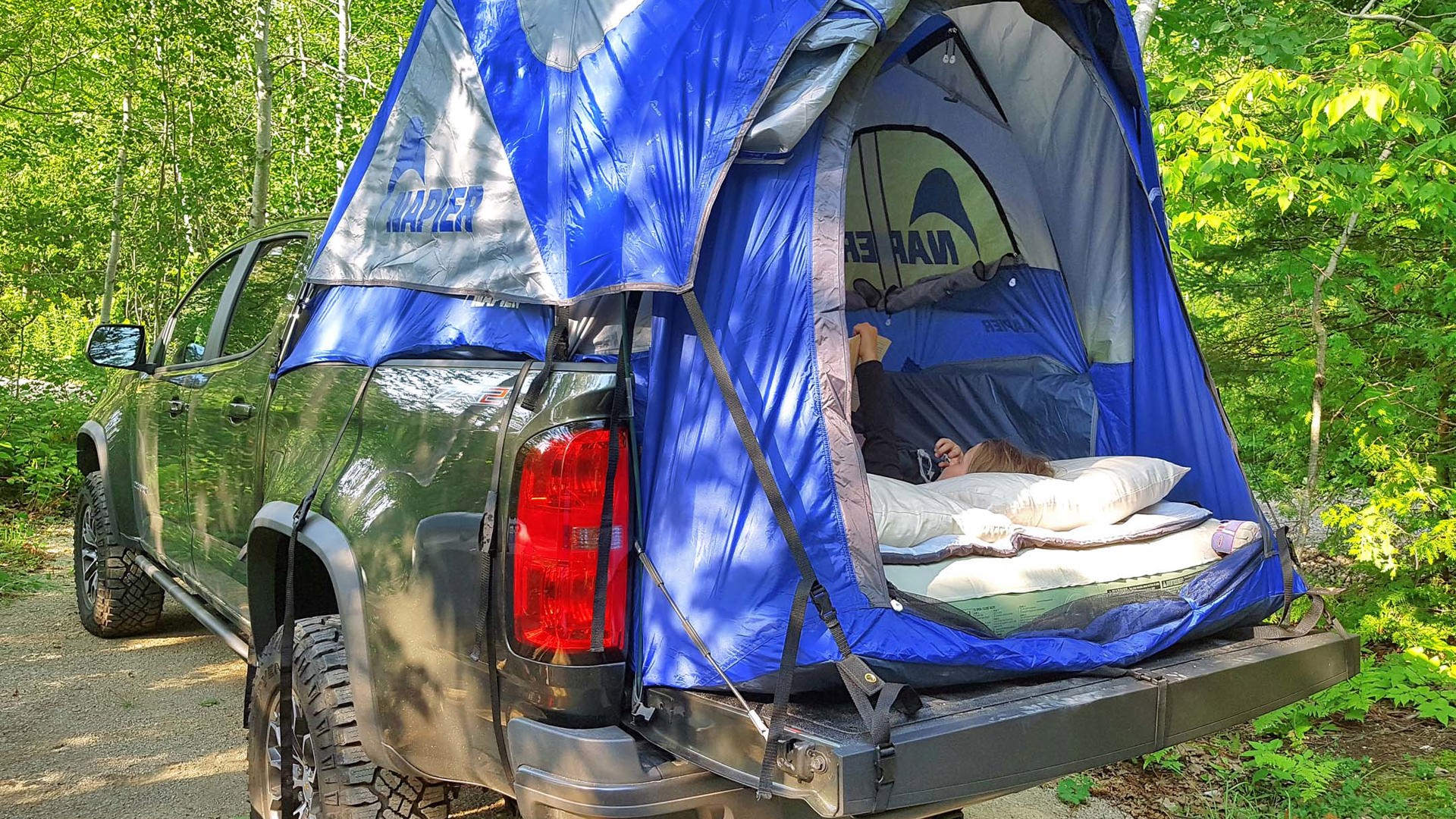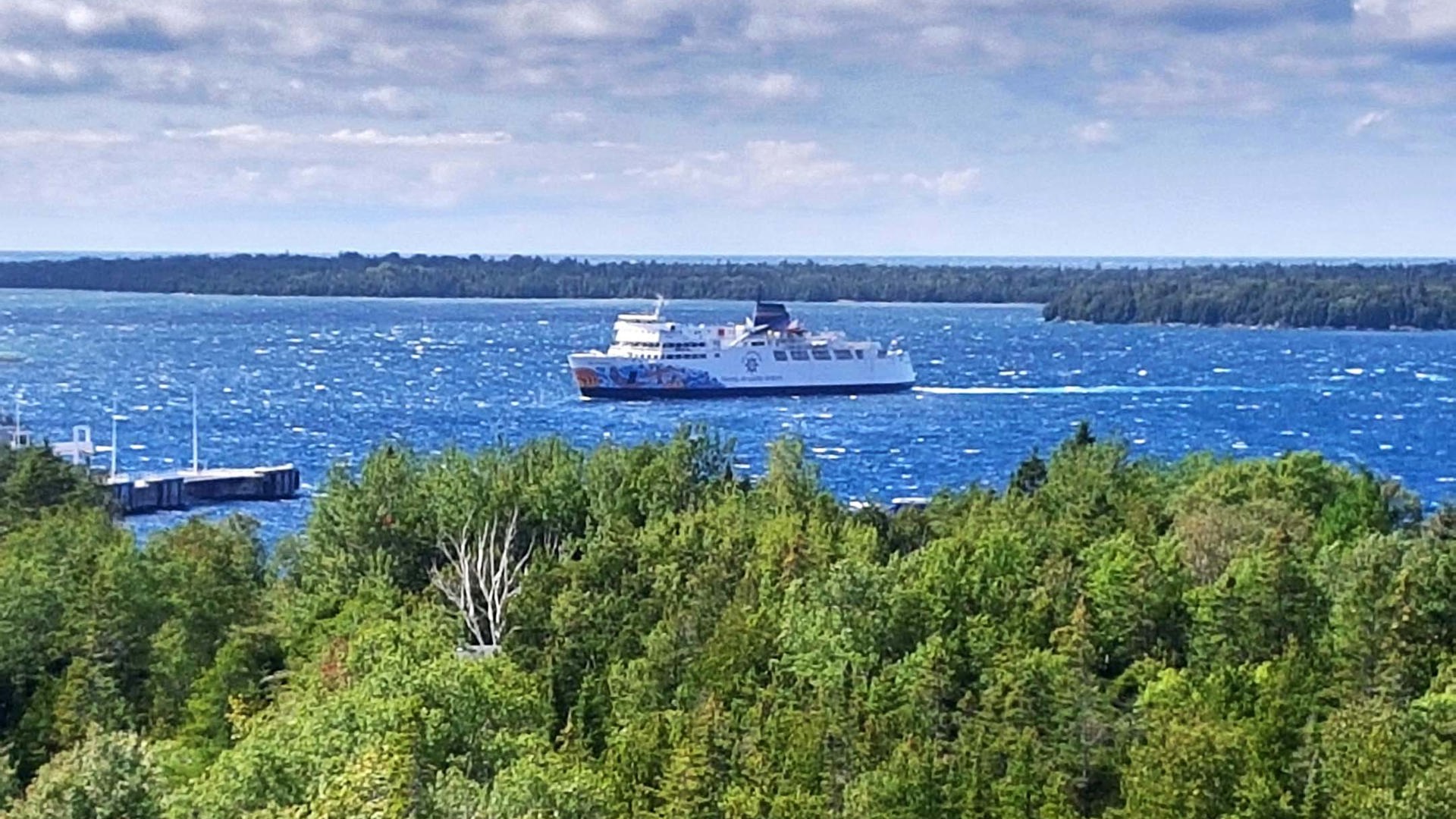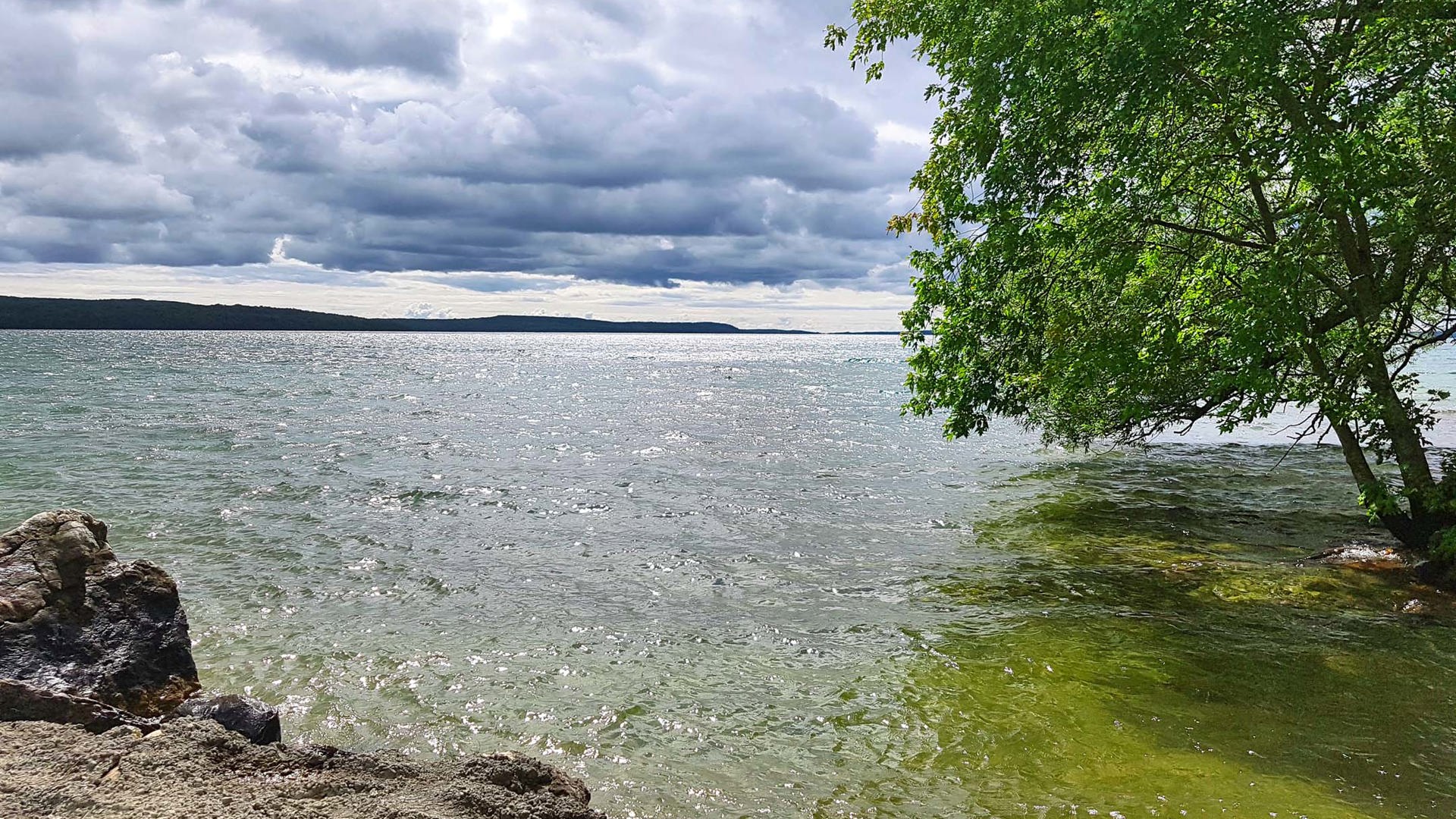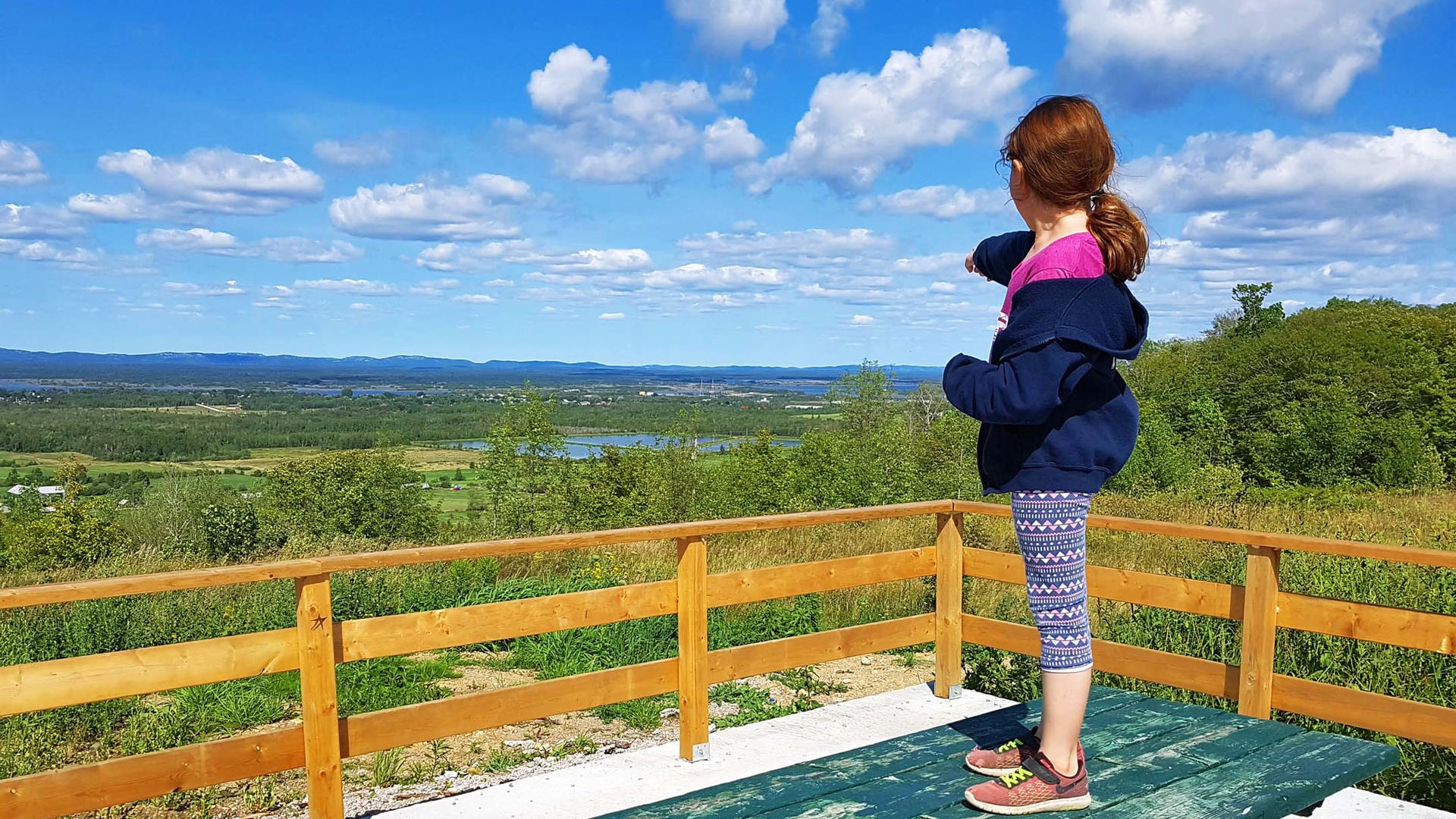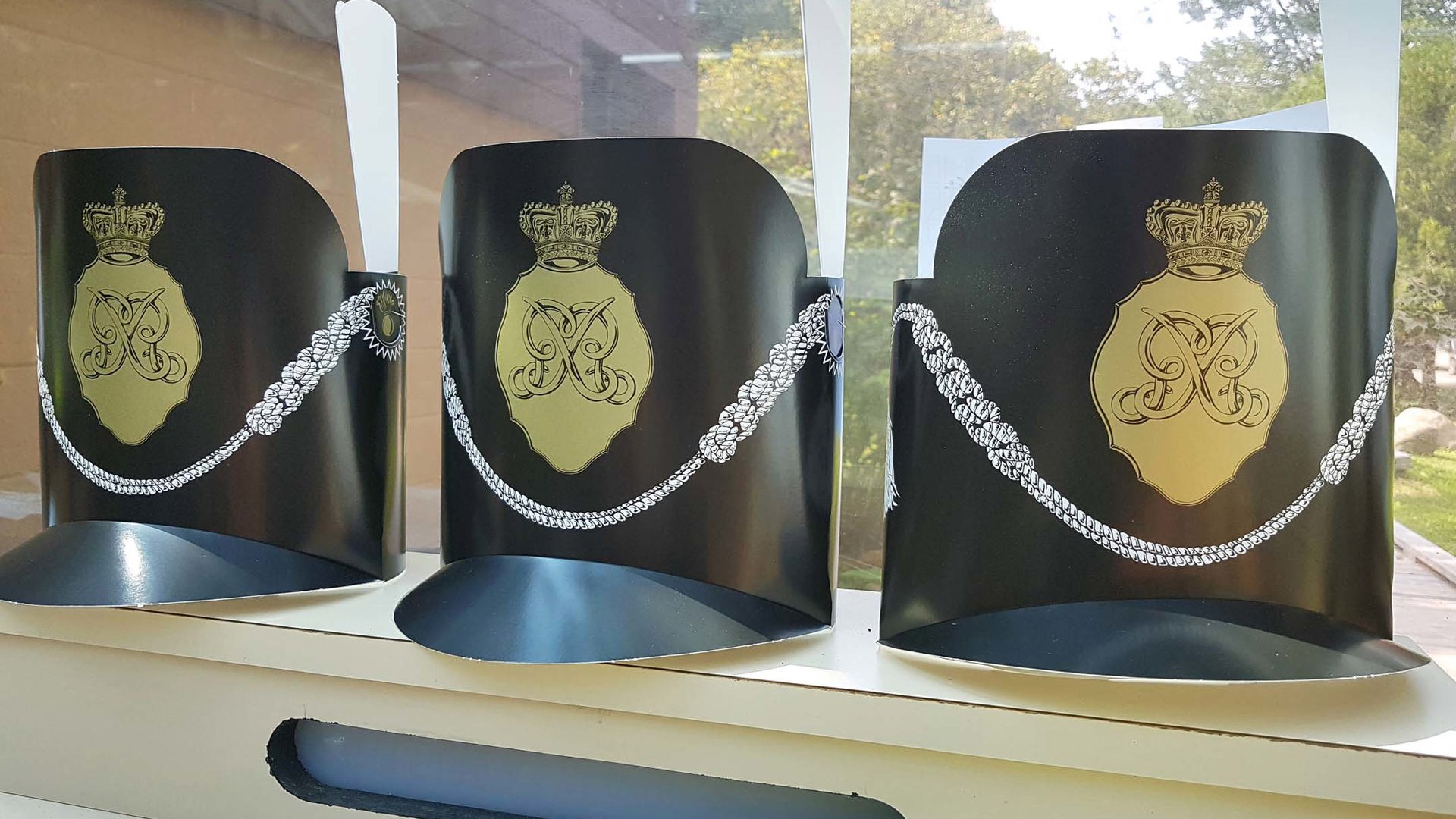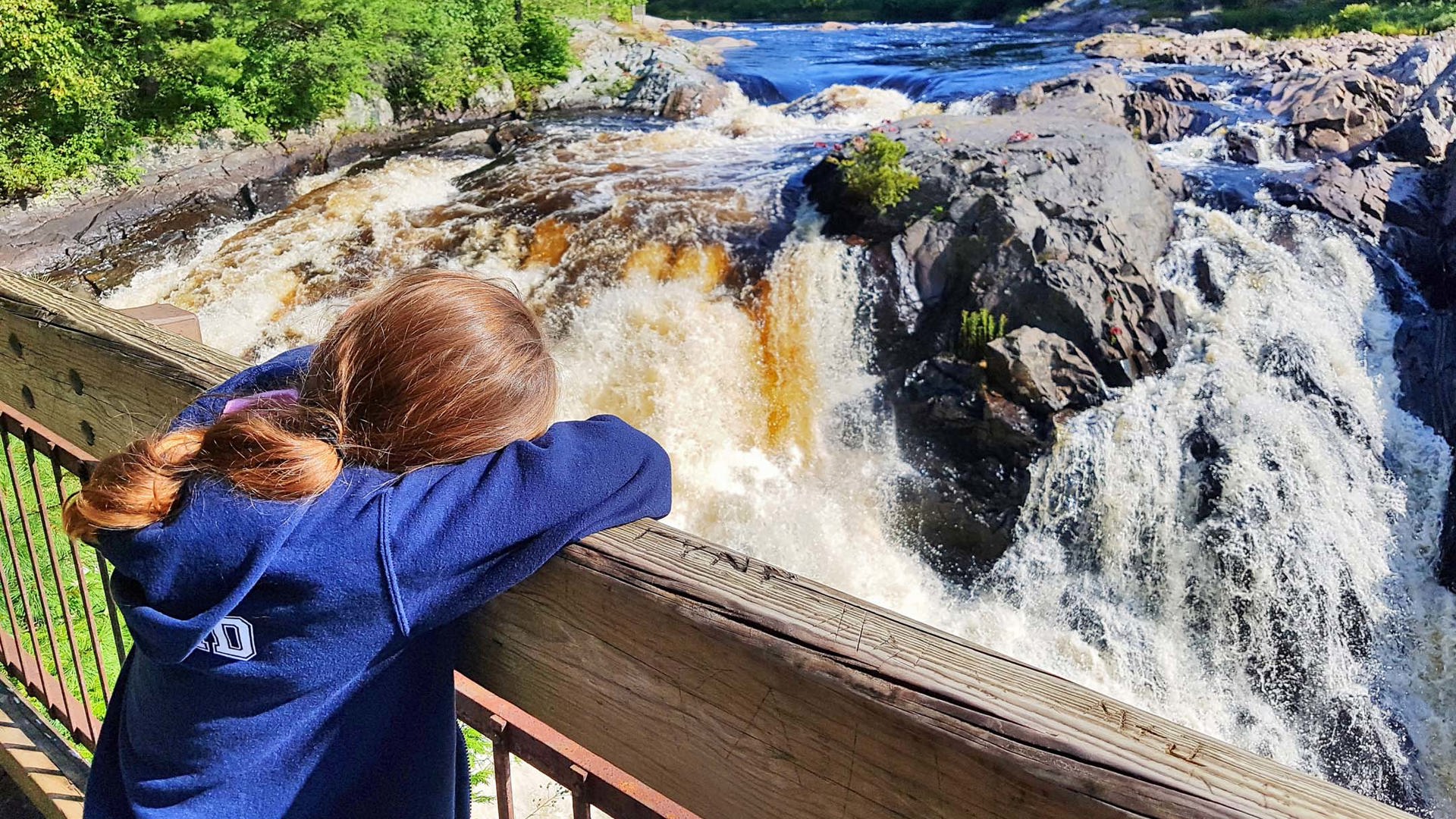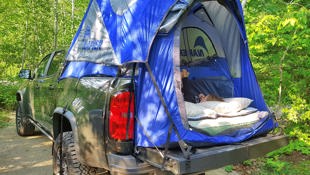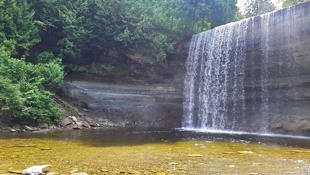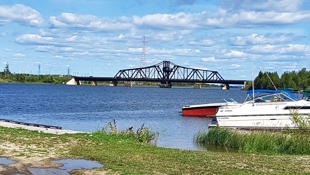I have a confession to make: I take Ontario for granted.
I’ve lived here all my life. I grew up climbing huge cedar trees and wading through rock-lined creeks at my grandparents’ acreage near Peterborough. I spent almost every long weekend of my early 20s backcountry camping with friends on a lake near Huntsville. I’ve caught dozens of fish off the dock of my aunt’s lakeside home south of Bancroft.
But once my daughter became old enough that I could begin to show her Canada’s many natural wonders, the most familiar treasures didn’t cross my mind. For the last few summers, we’ve made annual pilgrimages to the East Coast – a unique and wonderful part of the country, to be sure.
After my dad passed away earlier this year, though, it finally dawned on me how different my daughter’s upbringing is going to be from what my own was. My rural-dwelling family members are long gone, and with them the reflexive drive northward several times a year toward fresh air and campfires and starry skies and reconnection with nature has disappeared as well.
If I want my daughter to understand how those things shaped me and the rest of our family into the people we are today, I’m going to have to make the effort to show them to her myself.
So, we packed up a 2017 Chevrolet Colorado ZR2 with a Napier bed tent and some camping gear and set off to find the crystal-clear lakes, windswept pines, and rocky outcroppings of the Canadian Shield.
And knowing that a little motivation can work wonders with school-aged kids, I seized another opportunity. My daughter has become very interested in collecting the dog tags that select Parks Canada national parks and historic sites give out as part of their kid-focussed Xplorers program. With a little research, I found that we could complete a circle tour of Georgian Bay and pick up six tags in seven days while seeing an interesting array of sights along the way.
Here’s what we discovered in Ontario.
Day 1 and 2: Bruce Peninsula National Park and Fathom Five National Marine Park
We didn’t exactly get off to an auspicious start.
Day 1 was spent travelling northward from our home in Toronto to the Bruce Peninsula via Highways 10 and 6. After an easy four-hour drive, we reached our first campsite and set up, enjoyed our first campfire of the trip, and then tucked ourselves into our tent-in-a-truck-bed early. After all, we had a very busy day planned.
I feel like just showing up at the visitor centre and walking out with an Xplorers dog tag half an hour later is cheating when you’re claiming to have visited an entire national park. But we only had one day to dedicate to the area, so I had crammed our schedule to the hilt to ensure we captured the key experiences: an early morning swim at the Grotto in Bruce Peninsula National Park, an afternoon boat tour of Fathom Five National Marine Park’s shipwrecks and Flowerpot Island with Bruce Anchor Cruises, and a hike out to Georgian Bay from the visitor centre near Tobermory.
Unfortunately, nature had other plans.
As has happened so often this summer, a surprise storm ripped through the area overnight. The thunder and lightning and driving rain kept us up for hours and had me monitoring my phone for tornado alerts.
It wasn’t the exhaustion that was the problem in the morning, though – we were early into the trip at that point and still feeling relatively fresh. It was the tent. I’d set it up with the rain fly and so we were cozy and dry on the inside, but it was still too wet to pack up first thing in the morning. Being that it was attached to our truck, which can’t be driven when the tent is set up, we had no choice but to sit tight for a couple of hours and wait for the sun to do its thing.
Meanwhile, we received an email announcing that all small craft sailings from Tobermory had been cancelled for the day due to high winds, which meant that our marine park tour had been scuttled as well.
Once we finally got going, we had just enough time to head into town for a hot lunch – Tobermory’s downtown is lovely with plenty of small restaurants and sweet shops – and take a drive to the parks’ visitor centre. We had a look around at the exhibits there, climbed the many steps of the lookout tower to examine the largest remaining stand of forest in Southern Ontario, and had time for a short hike out to Little Dunks Bay Lookout to admire Georgian Bay’s uniquely blue waters.
That gave us just enough time to complete the activity books and head back to the visitor centre to claim two Xplorer tags, one for Bruce Peninsula and another for Fathom Five. Having missed out on so much of what I’d hoped we could see, though, I feel that our time there is unfinished. How fortunate we are that it’s all so close by that it won’t be any trouble to visit again another day.
One challenge of visiting this area is that camping in the parks often completely books up months in advance – but there are plenty of small, family-run campgrounds in the area ready to help you keep your plans. We stayed with Harmony Acres, a radio-free campground very conveniently located right on Highway 6 less than 10 minutes from Tobermory. The site’s lands are inset into Bruce Peninsula National Park, and its owners are dedicated to preserving the area’s natural ecology. That means they require you to buy local firewood (either from them or the shop down the street) and damaging trees or foraging in the forest are strictly prohibited, as are fireworks.
The campground is very nicely set up with picnic tables and fire pits at every site, multiple flush toilets and showers near the main building, and outdoor dishwashing stations that make camping life much easier. They also keep horses that can be seen from a few of the sites, and they’re working on a lounge area to provide refuge on rainy days that they expect will be ready by next spring. The showers cost extra, so you’ll want to bring cash, and some of the sites that are right up next to Highway 6 get a bit of traffic noise – ask for something toward the back of the property if this would bother you. Otherwise, we found Harmony Acres to be a comfortable and enjoyable home base for our Bruce Peninsula adventures.
Day 3: MS Chi-Cheemaun
The next stop on our journey was Manitoulin Island, which meant that Wednesday morning saw us pack up camp and head back into Tobermory to board the MS Chi-Cheemaun.
It wasn’t all that long ago that taking this ferry was a more efficient way to reach Manitoulin than driving all the way around Georgian Bay. Although you need to be at the dock an hour before your departure time, that plus the four-hour drive from Toronto plus the crossing time of just under two hours can get you island-side in less than seven hours total if you time it right. But with the ongoing expansion of Highway 400 and 69 up to Sudbury, it’s possible these days to get from Toronto to Little Current in six hours, which means that the Chi-Cheemaun is becoming a novelty to all but those who live closest to its ports.
This isn’t necessarily a bad thing, though, and the Chi-Cheemaun isn’t going anywhere. Today, its utilitarian roots have given way to becoming both a destination and an experience unto itself.
For one, it partially made up for our cancelled cruise by taking us through a section of Fathom Five National Marine Park. No, we didn’t see Flowerpot Island and its gravity-defying rock formations up close, nor did we examine shipwrecks through a glass floor. But we did sail past numerous protected islands and lighthouses that seemed endless through the first half of our journey.
We also enjoyed a filling and affordable lunch from the on-board cafeteria, which serves run-of-the-mill fare but of surprising variety for a sailing that only takes an hour and forty-five minutes.
Those high winds from the day before stuck around, which resulted in some choppy waters. My daughter and I are of hardy stock, but a few other passengers had a pretty rough go of things. The staff reported that such sailings are exceptionally rare, and given the topography of the area that’s probably true. We just got unlucky. We certainly wouldn’t let it stop us from taking the Chi-Cheemaun again.
After landing at South Baymouth with full bellies and rested minds, we were ready to take in all that Manitoulin Island has to offer.
Day 4: Exploring Manitoulin Island
Manitoulin Island is the world’s largest freshwater island, which gives it a starting point for being remarkable in a whole slew of ways.
This next fact is only a guess, but I think it’s also got to be the largest geographical area within a day’s drive of Toronto that’s entirely devoid of a Tim Hortons. (Can you believe that? Even Iqaluit has a Tim Hortons!)
But this is part of what makes Manitoulin wonderful. If you want a cup of coffee, you don’t go to Tims – you go to one of the local roasters. If you want good pizza, you don’t call the elevens – you head to Buoy’s Eatery in Gore Bay and sit at the picnic table on the breakwall to watch the boats go in and out of the harbour.
Everything about Manitoulin is individual, from the hotel operators to the restaurants and shops and campgrounds. You can’t even camp at a provincial park.
Somehow, Manitoulin Island became a place that time forgot, and the people who frequent it like it that way just fine.
We awoke on Thursday morning at Manitoulin Resort. This was a deliberate choice: my daughter read in a Canadian geography book that Lake Manitou, on which the resort is based, is the world’s largest lake in an island in a lake, and she has been asking ever since to see it for herself. She had hoped to go for a swim in it at the resort’s small beach, but the weather was too cold. Still, she got to dig around in the sand and splash in the waves for a bit.
When we set off on Thursday morning to explore the island – completing a rough circle tour of the main segment on Highways 6, 542, and 540 – I hadn’t intended for every single one of our stops to be outdoor-oriented. Manitoulin just has a way of making things work out that way.
We started out driving west across the south half. This was mostly pastoral, but we did find one highlight: Providence Bay Beach is one of the longest in the province and is perfect for kids with its shallow waters, gentle waves, and enormous playgrounds. It’s a little out of the way, but it’s well worth the side trip for an afternoon picnic.
In Kagawong, one of the better-known towns, we enjoyed a swim at the base of the beautiful Bridal Veil Falls and stopped in at the Manitoulin Chocolate Works to pick up some treats. (The chocolate-covered potato chips are to die for.)
And we couldn’t resist a side trip down Highway 551 to take a look at Treasure Island in Mindemoya Lake, which happens to be the world’s largest island in a lake in an island in a lake.
Our last stop before crossing the one-lane swing bridge in Little Current was a trip up to McLean’s Mountain Lookout. The road up to it is gravel and a bit steep and rutted – which made a perfect opportunity to take the Chevy Colorado ZR2 for a proper spin – but once you arrive you’re rewarded with a panoramic view of Lake Huron’s North Channel. The beauty, serenity, and authenticity of this place is reflective of what you find across the entire island. I hope it never changes.
We continued up Highway 6 through Espanola to join Highway 17, where we turned to the west and set up camp to prepare for the busiest day of our trip.
Day 5: Sault Ste. Marie Canal National Historic Site and Fort St. Joseph National Historic Site
Friday’s plans were as ambitious as the ones we’d had for Tuesday, but this time they came off perfectly. This is good because we were motivated: there were two more Xplorers tags in play.
From our home base at Chutes Provincial Park in Massey – a small but beautiful park with sizeable campsites, nice facilities, and beautiful trails overlooking the falls on the Aux Sables River – we set out early in the morning for a two-and-a-half-hour drive across Highway 17 to Sault Ste. Marie.
I wish I could report that this drive was exceptionally scenic or entertaining. It is in pockets, but it’s mostly unremarkable. Fortunately, the Chevy Colorado had us armed with Android Auto and my phone’s exceptional-if-I-do-say-so-myself playlist. (If you’re a fan of a capella, prog rock, and/or Canadian content, you should definitely take a drive with me sometime.)
We arrived at roughly lunch time, so we stopped in at the arches for a quick bite and then carried on into town for a visit to Sault Ste. Marie Canal National Historic Site. There, we learned about how the original lock, built in 1895, was the longest in the world at its opening and completed a Canadian-controlled shipping channel that extended all the way from Lake Superior to the Atlantic Ocean. After being forced to close due to a crack in a wall in 1987, a new lock was built within the walls of the historic one and opened to recreational craft traffic in 1998.
Our timing was perfect: a sailboat sought passage just after our arrival, so we didn’t have to wait long to watch a full cycle of the lock’s operation. Between that, completing the activity booklet, and enjoying a quick hike on the islands opposite the lock, we were ready to go after a 90-minute visit.
That made for perfect timing to get us back on the road for another hour toward St. Joseph Island, the southernmost tip of which is home to Fort St. Joseph National Historic Site.
This fort is particularly interesting because its history was among the shortest among forts within our shores: it was completed in 1796 and stood as Britain’s westernmost outpost in North America until it was burned to the ground by the United States after the War of 1812. The ruins themselves are a tad sparse as a result, but the charred juts of rock on some of the remaining walls stand profoundly. Plus, the views out over St. Marys River are impressive and the interpretation panels are full of great information, as is the small on-site museum.
All told, we were here for about another 90 minutes. The site has several hiking trails, but we sadly had to bypass them to make the two-and-a-half-hour drive back across the North Channel to get back to Chutes by nightfall.
It made for a long and full day but it was one we enjoyed immensely, and starting our Saturday from Chutes set us up for an easy-going drive south along Georgian Bay’s east coast as we turned toward our next destination.
Day 6: Bethune Memorial House National Historic Site
Have you heard of Dr. Norman Bethune? Before I started planning this trip, I hadn’t.
Millions of Chinese people have, though. Dr. Bethune introduced modern medicine to rural China almost singlehandedly and died there at just 49 years of age after contracting blood poisoning following a surgical procedure. Generations of children in Chinese schools were taught to memorize the eulogy that Mao Zedong wrote to him.
He was born in a house in Gravenhurst, Ontario, in 1890 that still stands today as a National Historic Site, where you can learn more about him for yourself.
We left Chutes and made the four-hour drive past Sudbury and down Highways 69 and 400. I hadn’t been down these roads in a few years, and it’s amazing how much progress has been made in the highway-widening project in that time, particularly just south of Sudbury. I was pleased to see that the work being done hasn’t taken away from how scenic and pleasant this drive is.
Getting to Gravenhurst required us to leave the 400 just south of Lake Joseph and take a lovely side tour around both it and Lake Muskoka. We arrived at Bethune Memorial House at about 3pm, and although the site closes daily at 4pm we still had enough time to learn about Dr. Bethune’s fascinating history. He overcame tuberculosis in both lungs while completing his medical education, created multiple inventions that revolutionized medical treatment in his era, and served as a medic in the Spanish Civil War before ending up in rural China, where his techniques saved scores of lives. He came to be known by the Chinese as “The Light Who Pursues Kindness”, a sentiment that, according to the museum, is now connected with all of Canada by many Chinese people.
The Xplorers activities here were easier for my daughter to complete than they have been at other locations, which might make this site a good litmus test for parents to see if younger kids will take to the program’s format without having to plan a long trip out of the city.
We left and pointed the Chevy Colorado toward Six Mile Lake Provincial Park for our last night of campfires and tenting under the summer stars.
Day 7: Georgian Bay Islands National Park
We loved every stop on our Georgian Bay tour, but my daughter and I both agreed that our final destination was our favourite.
For being so close to Canada’s largest city, Georgian Bay Islands National Park is relatively unknown and infrequently visited, mostly because it takes some commitment to get to. However, that fact only adds to its aura as a true hidden gem.
Make sure you plan ahead, though, or you’ll end up stuck in the same situation that I did.
Access to the park is from the village of Honey Harbour. Long-term tent campers need to hire a private water taxi to take them to Beausoleil Island, which costs upwards of $150 return. For visitors staying in permanent accommodations such as the cabins or going over for the day, though, there’s a park boat called the DayTripper that costs just under $10 return per adult.
However, the DayTripper requires an advance reservation. Guess who forgot to make one and had to hire a private boat after all?
It was an expensive mistake, but I have no regrets. And one pleasant side effect of paying our own way is that we were able to come and go at our convenience rather than on the park’s schedule, which gave us a bit of precious extra time to enjoy the beauty of the island.
The park encompasses 69 islands but most are completely unserviced, which means that the vast majority of visitors end up on Beausoleil Island as we did. At the main campground at Cedar Spring we found a small visitor centre and beach – but with no food whatsoever for sale, so be sure to bring your own – plus excellent ablution facilities and an extensive system of trails to explore, which is where we spent much of our afternoon. I was delighted to hear from the staff that deer ticks haven’t found their way to the island, which meant I could relax a little about my daughter rubbing up against leaves and grass in the forest. (There is poison ivy, but that’s a fair bit easier to spot from a few paces away.)
The Xplorers booklet only added to the fun as it turned our hike into a scavenger hunt. That said, the park so captured my daughter’s imagination – she was quite adamant that she needed to collect fallen acorns to make a castle for the local fairies on Finger Point, which quickly became a favourite spot where we spent several hours – that I had a hard time getting her to focus much on the activities at all. When we’re out appreciating nature, that’s an ideal problem to have.
After a few hours of learning about the island’s previous aboriginal population, examining frogs up close, and dipping our toes into Georgian Bay for a final time, we successfully picked up our sixth Xplorers tag in seven days and crossed back over to the mainland to climb back into the Colorado and head for home.
“You wanted me to see Ontario,” my daughter said sleepily from the back seat as the truck motored south. “I can see why. It’s really beautiful and special.”
Mission accomplished.


